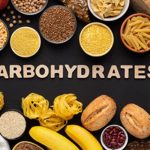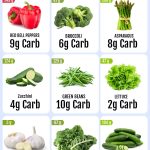The Low FODMAP diet has gained significant popularity in recent years as a promising solution for managing digestive issues such as irritable bowel syndrome (IBS). One of the key components of this diet is being mindful of the types of vegetables you consume. In this comprehensive blog post, we’ll explore the world of Low FODMAP vegetables, providing insights into what they are, why they matter, and how to incorporate them into your diet. We’ll also address frequently asked questions and offer external resources to help you on your Low FODMAP journey.
Understanding FODMAPs
To grasp the significance of Low FODMAP vegetables, we first need to understand what FODMAPs are. FODMAP is an acronym that stands for Fermentable Oligosaccharides, Disaccharides, Monosaccharides, and Polyols. These are a group of short-chain carbohydrates and sugar alcohols found in various foods, including many fruits and vegetables.
For some individuals, particularly those with IBS, these FODMAPs can be poorly absorbed in the small intestine and then fermented by gut bacteria in the colon. This fermentation process can lead to symptoms such as bloating, gas, abdominal pain, and diarrhea. Therefore, the Low FODMAP diet was developed to help alleviate these symptoms by reducing the intake of high FODMAP foods, including certain vegetables.
The Role of Low FODMAP Vegetables
Low FODMAP vegetables play a crucial role in the diet of individuals with digestive sensitivities. These vegetables are low in FODMAPs, meaning they are less likely to trigger gastrointestinal distress. Incorporating them into your meals can help you maintain a balanced and nutritious diet while minimizing uncomfortable symptoms.
Here are some common examples of Low FODMAP vegetables:
- Zucchini
- Bell peppers
- Carrots
- Cucumber
- Lettuce
- Potatoes (white, not sweet potatoes)
- Green beans
- Eggplant
- Spinach
- Kale
- Cherry tomatoes
These vegetables are generally well-tolerated and can be enjoyed without causing significant digestive discomfort.
Nourishing Your Lungs: 7 Top Foods to Maintain Lung Health During the Winter
Strategies for Incorporating Low FODMAP Vegetables
Now that we understand the importance of Low FODMAP vegetables, let’s explore strategies for incorporating them into your diet:
1. Learn About Portion Sizes
The Low FODMAP diet often involves paying attention to portion sizes. Even some high FODMAP vegetables can be tolerated in small amounts. Understanding portion sizes is essential for balancing your meals while keeping your symptoms in check.
2. Experiment with Cooking Methods
Different cooking methods can influence the FODMAP content of vegetables. For example, steaming or boiling vegetables can reduce their FODMAP levels compared to raw consumption. Experiment with cooking techniques to find what works best for you.
3. Consider Garlic and Onion Substitutes
Garlic and onions are high in FODMAPs and are commonly used to add flavor to dishes. Consider using Low FODMAP alternatives like garlic-infused oil or the green tops of green onions to maintain the desired taste without the unwanted side effects.
4. Consult with a Registered Dietitian
For personalized guidance and support, it’s highly recommended to consult with a registered dietitian who specializes in the Low FODMAP diet. They can help you create a customized meal plan that suits your dietary needs and preferences.
External Resources
To further explore the world of Low FODMAP vegetables and the Low FODMAP diet, consider these external resources:
- Monash University Low FODMAP Diet: Monash University is a pioneer in FODMAP research and provides valuable information, including a FODMAP food guide.
- FODMAP Everyday: This website offers a wealth of Low FODMAP recipes, tips, and resources for individuals on the FODMAP diet.
- International Foundation for Gastrointestinal Disorders (IFFGD): The IFFGD provides comprehensive information about digestive disorders, including IBS and dietary management.
Delicious and Nutritious: Exploring the World of Gluten-Free Foods
FAQs: Low FODMAP Vegetables
Let’s address some frequently asked questions about Low FODMAP vegetables and the Low FODMAP diet:
1. Can I eat high FODMAP vegetables in moderation?
In some cases, small portions of high FODMAP vegetables may be tolerated, but it varies from person to person. It’s essential to consult with a healthcare professional or dietitian to determine what’s safe for you.
2. Are all vegetables with similar appearances Low FODMAP?
Not necessarily. While some vegetables within the same family may have similar FODMAP profiles, there can be variations. It’s important to check specific vegetable varieties for their FODMAP content.
3. Can I reintroduce high FODMAP vegetables later?
Yes, the Low FODMAP diet is typically divided into three phases: elimination, reintroduction, and maintenance. The reintroduction phase allows you to test your tolerance to specific FODMAP groups, including high FODMAP vegetables.
4. How long should I follow the Low FODMAP diet?
The duration of the Low FODMAP diet can vary. Some individuals find relief from symptoms within a few weeks, while others may need to follow the diet for a more extended period. It’s essential to work with a healthcare professional to determine the appropriate duration for your specific case.
5. Can I enjoy a diverse and balanced diet on the Low FODMAP plan?
Yes, with careful planning, you can enjoy a diverse and balanced diet on the Low FODMAP plan. While certain high FODMAP foods are restricted, there are plenty of Low FODMAP alternatives that can provide essential nutrients.
Conclusion
Navigating the world of Low FODMAP vegetables is an essential part of managing digestive sensitivities and improving your overall well-being. By incorporating Low FODMAP vegetables into your diet and following personalized guidance, you can enjoy delicious and nourishing meals while minimizing uncomfortable symptoms. Utilize external resources and frequently asked questions to deepen your understanding of the Low FODMAP diet and embark on a journey towards digestive wellness.










